Karibu sana Tanzania! (Welcome to Tanzania!)
If you’re planning on travelling to Tanzania, get used to hearing this welcoming Swahili expression. I lived in Tanzania for a year and never tired of it. But I also never tired of Tanzania — the culture, the language, the scenery, and the people all captured my heart, which made leaving all that more emotional.
I moved to Tanzania to work on a Global Affairs Canada project for a year, during which time I lived in Mwanza, a stunning port city on the shores of Lake Victoria, towards the western region of the country. It’s a place that had some of the most beautiful sunsets I’ve ever seen, but it was the rest of the country that had me falling head over flip-flops in love with Tanzania.
Over my year in the country, I put my all into seeing as much of it as possible, visiting places that so many people dream of seeing one day. I’ll never forget the moment I saw wild elephants for the first time or how it felt to welcome in the new year beside the turquoise waters of Zanzibar. Even battling my way to the top of Mount Kilimanjaro was a life experience I’ll always treasure.
Today, I’m excited to share just how much you can expect to spend on a trip to Tanzania. The good news is that it is possible to visit the country on a budget… but the bad news is that I don’t recommend doing so.
In Tanzania, your money can go a hell of a long way when it comes to food, transportation and, in some cases, accommodation. But if you’re going to be flying to the east of Africa from any other continent on the planet, you’re probably going to spend a lot of money on flights. Plus, all of those once-in-a-lifetime experiences can quickly eat up your budget.
That being said, what’s a trip to Tanzania without going on safari?
Fortunately, Tanzania is one of the few countries that hasn’t been affected by skyrocketing prices post-pandemic. In 2024, it’s still possible to travel the country as a budget backpacker and score great deals on luxury safaris.
One thing’s for sure, a trip to Tanzania will stay with you forever. Tanzanians are incredibly friendly and hospitable, and they love when foreigners come to explore their country. It also doesn’t hurt to learn a bit of Swahili (hello = jambo; thank you = asante; you’ll hear hakuna matata a lot, too: it means no worries!) I’ve never been anywhere where the locals appreciate me speaking the local language more than Tanzania.
Even though I lived in Tanzania for a year, I quickly learned that the time of year makes a huge difference to the type of trip you’ll want to put together. In Tanzania, there are both short and long dry seasons and short and long wet seasons.
Peak (dry) season: June to October. This is the long dry season in Tanzania: these are the months where you’ll encounter the least amount of rain. Because of this, it’s also the most popular time of year for tourists to visit, as it coincides with northern hemisphere school holidays. And because of that, you’ll encounter more crowds and higher prices. The wildebeest migration in the Serengeti is usually during June and July, and that’s always super-popular!
Low (wet) season: April – May (long rains) or November – January (short rains). These months will be the best time to plan your trip to Tanzania only if you’re looking to save money on accommodations and excursions while in the country.
There’s also the short dry season, which is my personal favourite time of year to visit. That runs between February and early-March. You’ve got the great weather combined with smaller crowds and slightly cheaper prices.
With all of that in mind, let’s start taking an in-depth look at how much you can expect to spend while travelling in Tanzania.
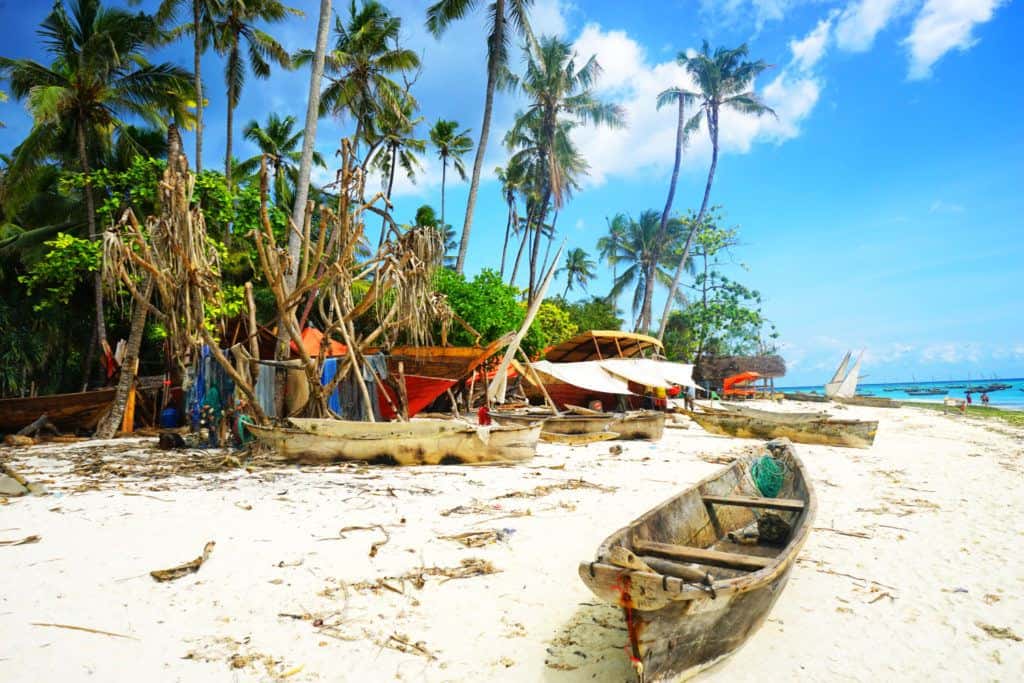
What’s Included in This Post
This budget breakdown covers how much I spent on accommodation, transportation, activities, and food while I travelled around the country.
I’ve not included my flights into and out of Tanzania, as this is going to vary significantly based on where you’ll be arriving from.
The amounts in this guide are listed in U.S. dollars, simply because the vast majority of my readers are from the U.S. I also included some prices in Tanzanian Shillings (TZS), as this is the local currency that you’ll use the most. But most of the tour operators and accommodations will also take USD.
Okay — let’s get started!
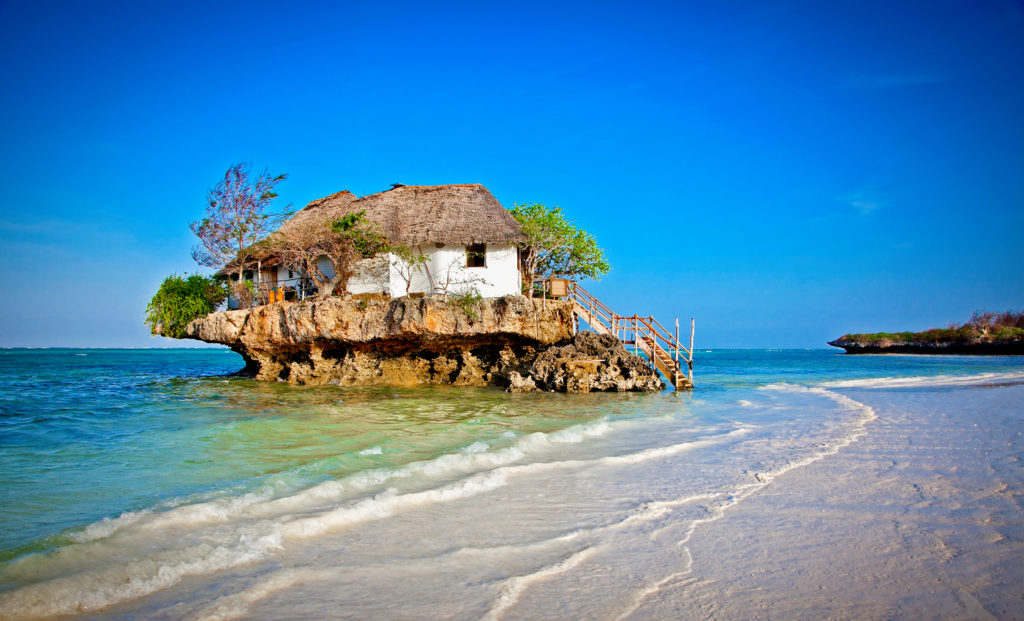
How to Save Money on the Cost of Accommodation in Tanzania
As always with travel, it’s possible to cut your accommodation costs down to zero if you have the time and patience to seek out an offer.
Housesitting is a great option for free accommodation. This is where you’ll take care of somebody’s house while they’re away, and usually look after their pets, too. It’s best for long-term travellers or retirees as you can’t pick and choose dates and destinations, so you need to have a lot of flexibility as to where you go and at what time of year.
If you do have that freedom, it’s a wonderful way to cut down your travel expenses, soak up some home comforts, and live like a local for a while. Trusted Housesitters is the best site for getting started with housesitting, as they have the highest number of listings. That said, there still aren’t a lot of housesits that come up in Tanzania, but it’s still worth taking a look: you never know your luck!
I’m suspecting, though, that for most of you, you’re not interested in the free accommodation and just want somewhere clean, safe, and affordable to rest your head each night. If that’s the case, there are several options available for you.
The first of these are hostels. In Tanzania, you’ll come across hostels all over the country, finding them on tiny islands, in large cities, and even in the national parks. They’re one of your best options for saving money.
Hostels in Tanzania are on a par with the rest of Southeast Africa, and you can expect to spend around $15 a night for a dorm bed for a well-reviewed hostel in Tanzania, with the price increasing to slightly about $25 a night for the absolute best of the best.
When it comes to private rooms in hostels, prices start at around $35 a night for a clean, basic room in a well-rated hostel in good location, so if you’re travelling with friends or with your partner, you may find it cheaper to grab some privacy over settling for two beds in a dorm room.
I use HostelWorld to find the cheapest hostels, as they tend to have the greatest number of listings at the lowest prices.
And, of course, there are always hotels, which will usually come in at around $20-$50 a night for a decent, clean, mid-range property in a central location. I always use Booking, as they have the most accommodation options for the cheapest prices.
The Cost of Accommodation in Tanzania
When it comes to accommodations in Tanzania, even the budget-friendly options emit a feeling of luxury. There were some places I stayed in that offered amazing value at a fraction of what I would pay for a hotel of similar caliber in Canada.
Most quality, mid-range accommodations will cost you around $25-$60 a night. High-end stays can fall anywhere between $100-$200+ a night, depending on location and amenities.
When it comes to going on a multi-day safari or trek, however, prices definitely go up. You’re looking at (brace yourselves!) anywhere from $350 – $1,500 a day when staying in private lodges, or around $225 a day for more budget versions where you’re camping most or all of the time. This usually includes everything including food, transport, and guides, however, not just accommodation, and bargains can still be had with a bit of research. I’ll be sharing how to do that later on in this guide.
When it comes to accommodation in Tanzania, I have a ton of recommendations for you.
Dar es Salaam — Cefa Hostel ($43 a night): You’ll likely spend some time in Dar, the bustling urban metropolis and central landing city for incoming arrivals from abroad. Cefa Hostel is a comfortable launching pad to the rest of your time in Tanzania. The rooms are clean and comfortable, the wifi is strong (which is not always the case in Tanzania) and it’s just steps away from the ocean. The owner is also incredibly welcoming and can help you with all of your onwards bookings, connect you with locals, and show you the Dar that she knows and loves.
Don’t let the fact that it’s a hostel put you off booking — it’s a guesthouse, really, as there aren’t any dorm rooms on the property, it’s clean and quiet, and attracts couples on a mid-range budget.
Zanzibar — Villa Kiota ($53 a night): Zanzibar is a must (I repeat a must!) during your time in Tanzania. This semi-autonomous island is probably what you envision when you have dreams of being in paradise. I was lucky enough to travel to Zanzibar a couple of times during my year in Tanzania, and my favourite place to stay was Villa Kiota in Paje. The staff are wonderful, the breakfast is delicious, and the rooms are spotlessly clean. There’s a lovely garden to chill out in, and you couldn’t be closer to glorious Paje beach without sleeping literally on it! I can’t recommend it highly enough.
Mwanza — Malaika Beach Resort ($140 a night): Here’s the thing. I lived in Mwanza, so I never had to stay anywhere else besides the room I rented out. But word gets around fast and I quickly learned that Malaika is THE place to be on Sundays because of their infamous Sunday buffet brunch. I fondly remember many Sundays spent here, eating the delicious food then spending the afternoon by the infinity pool with stunning views of Lake Victoria. Friends who stayed there let me know the rooms are also immaculate, and well worth the extra spend during your time in Mwanza.
Moshi — Kilimanjaro Scenic Lodge ($69 a night): If you’re trekking up Mount Kilimanjaro, then you’ll be spending some time in Moshi before and after. I stayed at Kilimanjaro Scenic Lodge and loved it. As the name suggests, there are great views of the mountain from many of the rooms, but that’s just the beginning. There’s also an onsite restaurant with great food, so you don’t even need to leave the premises to eat: handy if you’ve just got back from climbing up and down a mountain! There’s a lounge and bar to chill out in, comfortable beds, hot showers, and free Wi-Fi. Gabriel and the team are happy to look after your luggage while you’re climbing the mountain, and will make you feel right at home throughout your stay. Definitely recommended.
Arusha — Greenside Hotel ($56 a night): Arusha will almost certainly be a stop during your Tanzania trip, and with superstar attractions like Serengeti National Park, Arusha National Park, and Lake Manyara nearby, why wouldn’t it be!? Greenside Hotel is the perfect place to stay while you’re there: it’s a quiet and friendly place just outside the bustling city center, with large, clean rooms. The food is reasonably priced and delicious, with a tasty breakfast included. But it’s the staff that really make this place: I loved them! They’re only happy to help you with anything you need, from getting a SIM card to transport, food, or whatever other travel requirements you have.
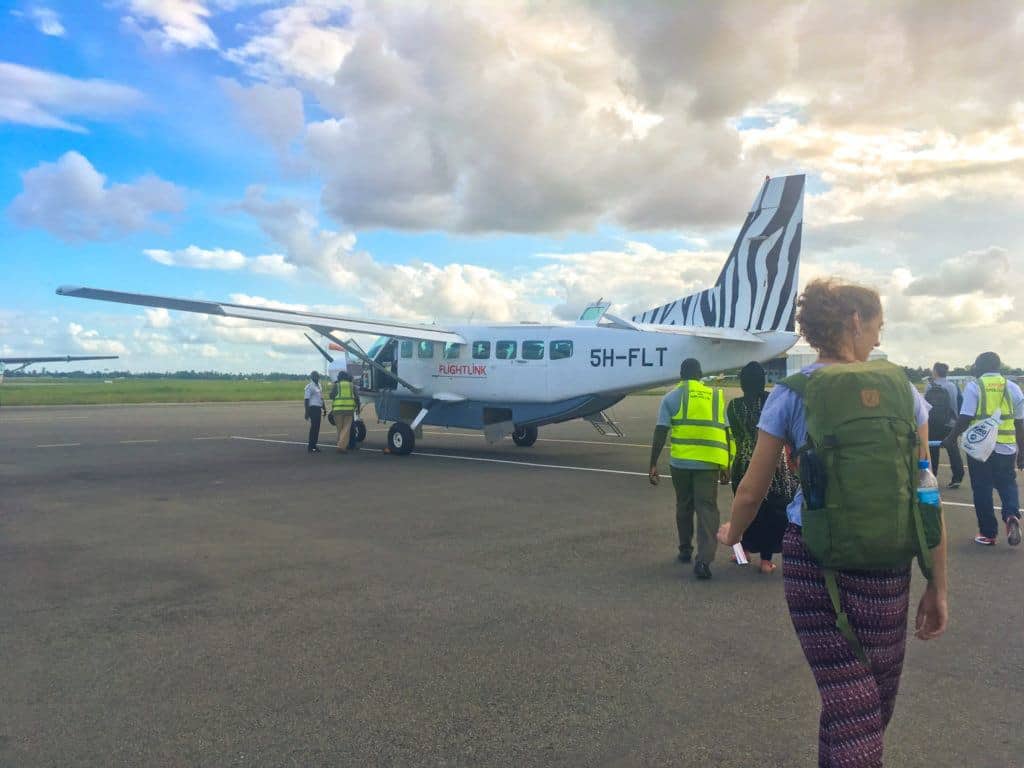
The Cost of Transportation in Tanzania
Transportation around Tanzania can be quite affordable, if you’re up for a little adventure. I had firsthand experience of all the below transportation methods and I took the most pleasure from taking dala dalas and boda bodas.
Dala dala (minibuses) — You’ll see dala dalas everywhere in Tanzania. These are minibuses that you share with anywhere from 8 to 16 people (there’s no such thing as a limit in Tanzania). If they can squeeze one more person or animal in, they will. The great thing about dala dalas is their affordability and accessibility. They come and go from stops quite frequently and it only costs around 20 cents or 400 TZS for a one-way journey within a city. There are dala dalas running between major cities as well, at a fraction of the price of a taxi: just bear in mind that there isn’t much room for luggage!
Boda bodas (motorcycle taxis) — Taking a Boda Boda may seem daunting and intimidating at first. Of course, don’t take one if you’re not comfortable, but these are a fast and cheap way to get around. Not to mention, it’s very thrilling to be on the back of a motorbike just to get from point A to point B. But I would only recommend taking a boda boda when the driver has a second helmet for you to use.
You also might need some basic Swahili and negotiating skills if you’re a foreigner taking a boda boda, because there’s no official price scheme. That being said, talk to someone at your accommodations about what the general rate is for locals in the area and try to approach a boda boda driver with confidence. When I lived in Mwanza, I generally paid only 2000 – 3000 TZS (80c to $1.25) to get around on a boda boda. And knowing some Swahili gave me the confidence to negotiate fair prices.
Taxi — Taxis are an easy and safe way to get around in Tanzania, although they aren’t especially budget friendly. Also, try to only use taxis/drivers that are recommended to you by an official tour guide or accommodation staff member. Whenever I take a taxi here, I try to use one that’s been recommended by somebody trustworthy. Usually an average taxi ride in the city costs between 20,000 – 40,000 TZS ($8-16).
Rideshare — Uber and Bolt have both arrived in Tanzania, although in 2024, you’ll still only find them in Dar es Salaam. If that’s where you’re trying to get around, though, they’re definitely the most convenient private transport option, and cheaper than a taxi. Payment can be made by card or cash, although expect a bit more “discussion” over the price if you use the latter!
Plane — City transportation is one thing, but when it comes to getting around the country, that’s a whole other story. While there are several long-haul bus rides available, these can get quite lengthy and unpredictable. If you only have a short time in Tanzania, I would recommend taking flights to travel from one part to another, especially considering they’re still relatively budget-friendly. Here are some of the routes and their respective prices from Skyscanner:
- Dar es Salaam to Moshi — $78 or 195,000 TZS
- Dar es Salaam to Zanzibar — $30 or 75,000 TZS
- Dar es Salaam to Arusha — $83 or 210,000 TZS
- Moshi to Mwanza — $98 or 246,000 TZS
Ferry — If you plan on going to Zanzibar (how could you not?), then you have a choice between taking a flight or a ferry. I found the ferry between Zanzibar and Dar es Salaam to be pretty decent and comfortable. Two companies run this service, with a total of six ferries in each direction per day. The journey takes around two hours, and costs $35 or 88,000 TZS each way. You may get a small discount when buying a return ticket.
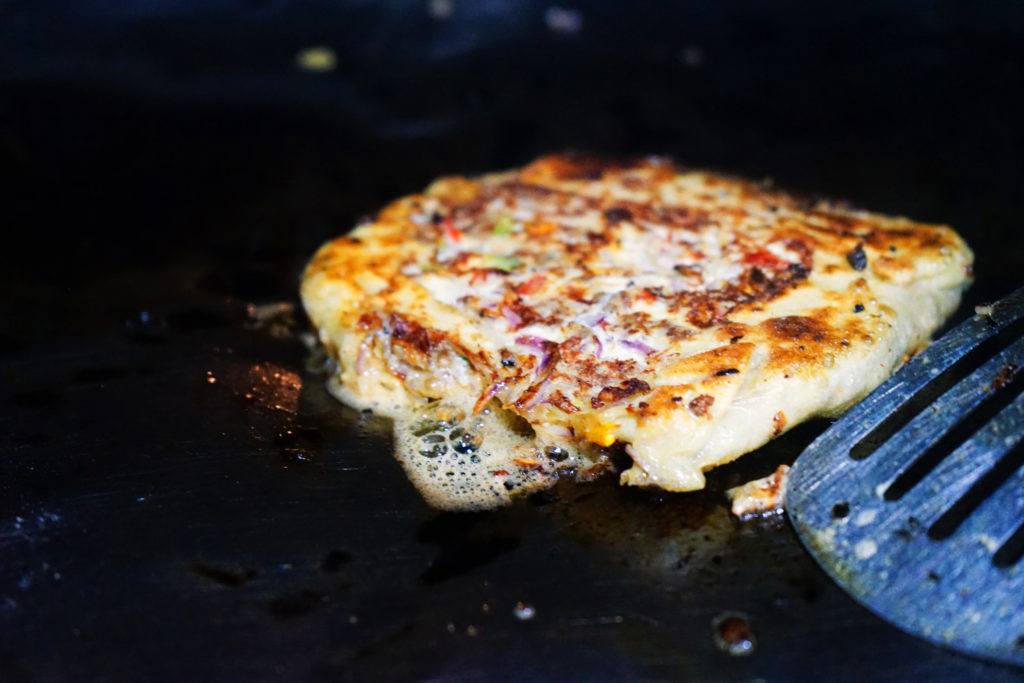
The Cost of Food in Tanzania
One of the best parts of living in Tanzania is how much access I had to fresh fruit and vegetables at low costs. Whenever I went to the local market, it was pretty obvious that whatever I saw was from the crop of that day or week. And when avocados and mangos cost around $0.15, I question my decision to leave whenever I return to Canada.
I categorize food in Tanzania in one of two ways: local food and western food. You can expect local food, whether it’s sold on the street or at a small restaurant, to be very affordable.
Some typical Tanzanian dishes include: ugali (cornmeal paste), mshikaki (marinated beef), chips mayai (egg mixed with fries), nyama choma (grilled meat), pilau (rice mixed with spices) or rice and beans. All of these dishes, whether combined or alone will cost you around $1.50 – $4 (3800 – 10,000 TZS). Therefore, eating only local food can cost you as little as $5 per day.
If you’re eating at a more western restaurant or hotel, then be prepared to pay a reasonable price compared to what you’d expect back home. I’m letting you know ahead of time, though, it will feel like a punch in the gut once you’re used to local food prices! For a typical western meal of (for example) pizza, pasta, or burgers at a good restaurant, you might pay about $12 – $20 (30,000 – 50,000 TZS) per person.
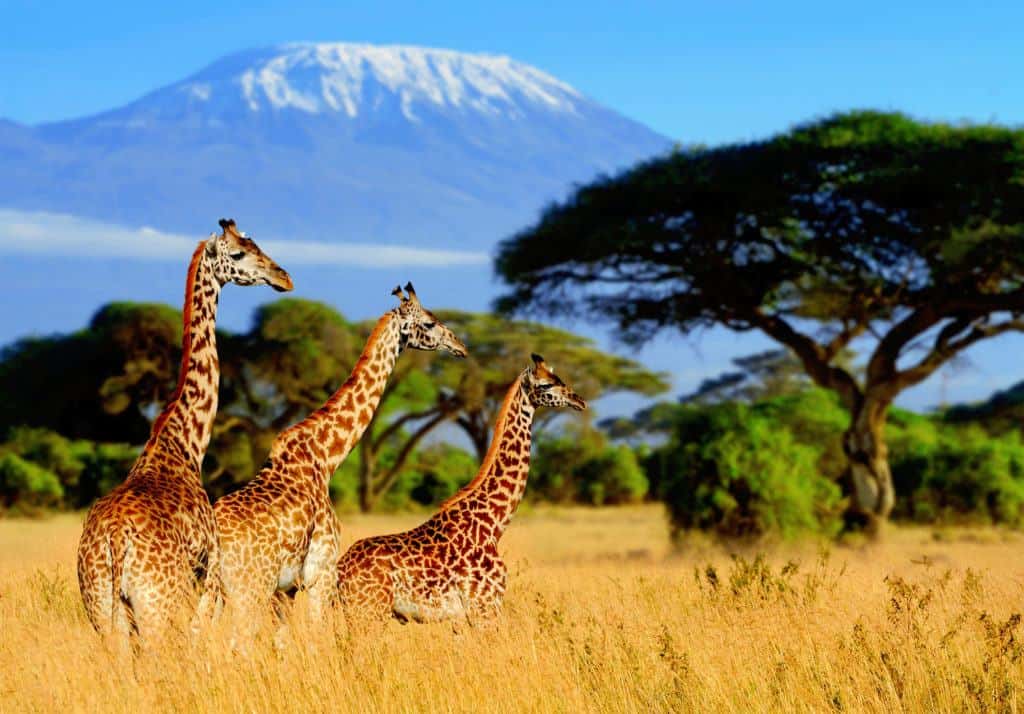
The Cost of Activities and Entrance Fees in Tanzania
Saving the best for last—the outdoor experiences are the best part of any trip to Tanzania. You have access to vast national parks, incredible wildlife, some of the world’s best beaches, and Africa’s tallest mountain. It’s understandable, then, why Tanzania is home to activities on many people’s bucket lists.
Seeing animals in Serengeti National Park, climbing Mount Kilimanjaro, and waking up in Zanzibar on New Year’s Day are among some of my favourite travel experiences of all time. I’d recommend a safari and Zanzibar excursion for anyone who visits Tanzania. For Mount Kilimanjaro, as great as standing at the summit is, bear in mind that getting there requires a challenging week-long high-altitude trek that isn’t appropriate for everyone.
Luckily, you’re spoiled for things to do in this stunning and welcoming country. There are plenty of gorgeous national parks, small day-hikes and places to explore. Every day feels like an adventure.
Below is a breakdown of some of the costs you can expect for the top attractions in Tanzania. Keep in mind that this mostly consists of just entrance fees. These can vary depending on the time of year: I’ve given a range where that’s the case.
I also included some example prices for safaris and Kilimanjaro hikes as well, but your final prices will almost certainly be different depending on the companies you use, the type of accommodation you stay in, and the length of the experience.
Entrance Fees
- Serengeti National Park: $60-70 per person, per day
- Lake Manyara, Tarangire and Arusha National Park: $45-50 per person, per day
- Mount Kilimanjaro: $70 per person, per day
- Gombe National Park: $100 per person, per day
Safari and Trekking Costs
- 9-day Mount Kilimanjaro Hike via the Lemosho route (budget): $2,695 per person
- 2-day safari in Serengeti National Park (budget): $510 per person
- 7-day safari in Serengeti National Park and Ngorongoro Crater (mid-range): $2,695 per person
- 7-day private safari in Serengeti National Park following the Great Migration (luxury): $4,120 per person
There are so many companies offering safari experiences in Tanzania that sorting through them all can be a bit overwhelming: I’d strongly recommend using the Safari Bookings site to help narrow things down.
It’s a massive marketplace for safaris around the country, with nearly 5000 different trips ranging from a half-day to three weeks, and filters that make it much faster to find exactly what you’re looking for. It can be cheaper to book with the safari company directly once you’ve found a tour you like (although many don’t give exact prices until you email them), but I’d definitely start with the Safari Bookings site either way.
Note that when you go on a guided safari or tour, tipping is customary. For a safari, I would add around $15 extra per day. For a guided trek, I’d add around $25 extra per day.
If you’re like me, and love to make the most of your time, there are also loads of shorter half or full-day tours that let you experience aspects of Tanzania beyond the famous safaris and mountain treks. To find them, I recommend hopping over to Get Your Guide, a marketplace for tours that I’ve used over the world. I took this spice tour in Zanzibar, for example, while I was on the island, and loved it so much that I wrote an entire blog post reviewing it.
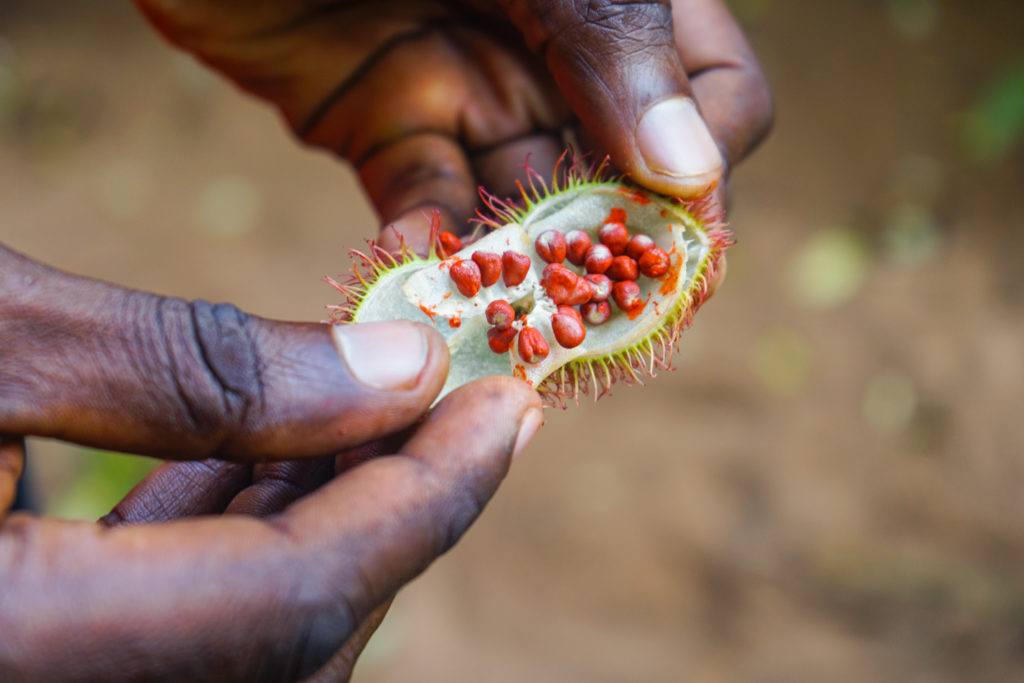
Miscellaneous Costs
Tanzanian SIM card: I don’t know about you, but one of my least favourite aspects of arriving in a new country is having to figure out how to get connected. Specifically: buying a local SIM card so that I have data to use while I’m in the country.
There’s locating a store that will sell you one, language barriers to deal with, various forms of ID you might need to bring, scams to navigate, and… well, it’s a headache. In Zanzibar, I actually got scammed when I tried to buy a local SIM card! I ended up being charged five times the actual price by the store owner and didn’t realise until after I’d left.
Last year, I started using Airalo, which sells local e-SIM cards for travellers. What that means is that you can buy your SIM online before you arrive in Tanzania, and then as soon as you land in the country, you can switch on your data and start using it. It’s worked flawlessly for me and I’ll never go back to physical SIM cards! You’ll pay $4.50 for 1 GB of data or $26 for 10 GB in Tanzania, and can top-up on your phone through the Airalo app if you run out.
However, if you’re on a tight budget and don’t mind a bit of hassle, you can opt to save money by buying a SIM card from a local store. Just watch out for those scams I mentioned earlier! In Tanzania, I recommend getting a SIM card with Vodacom. Data is super-cheap this way, and Vodacom has the widest coverage network in Tanzania . You can top up anywhere at a Vodacom booth in the country.
I paid $12 (30,000 TZS) for a Vodacom SIM with 10 GB of data, plus way more calls and texts than I could ever use, that lasted for a month. Not a bad deal at all!
The Cost of Travel Insurance in Tanzania
If you’ve read any other posts on Never Ending Footsteps, you’ll know that I’m a great believer in travelling with travel insurance. I’ve seen far too many Go Fund Me campaigns from destitute backpackers that are unexpectedly stranded in a foreign country after a scooter accident/being attacked/breaking a leg with no way of getting home or paying for their healthcare. These costs can quickly land you with a six-figure bill to pay at the end of it.
In short, if you can’t afford travel insurance, you can’t afford to travel.
Travel insurance will cover you if your flight is cancelled and you need to book a new one, if your luggage gets lost and you need to replace your belongings, if you suddenly get struck down by appendicitis and have to be hospitalised, or discover a family member has died and you need to get home immediately. If you fall seriously ill, your insurance will cover the costs to fly you home to receive medical treatment.
I use SafetyWing as my travel insurance provider, and recommend them for trips to Tanzania. Firstly, they’re one of the few companies out there who will actually cover you if you contract COVID-19. On top of that, they provide worldwide coverage, don’t require you to have a return ticket, and even allow you to buy coverage after you’ve left home. If you’re on a long-term trip, you can pay monthly instead of up-front, and can cancel at any time. Finally, they’re more affordable than the competition, and have a clear, easy-to-understand pricing structure, which is always appreciated.
With SafetyWing, you’ll pay $1.50 a day for travel insurance.
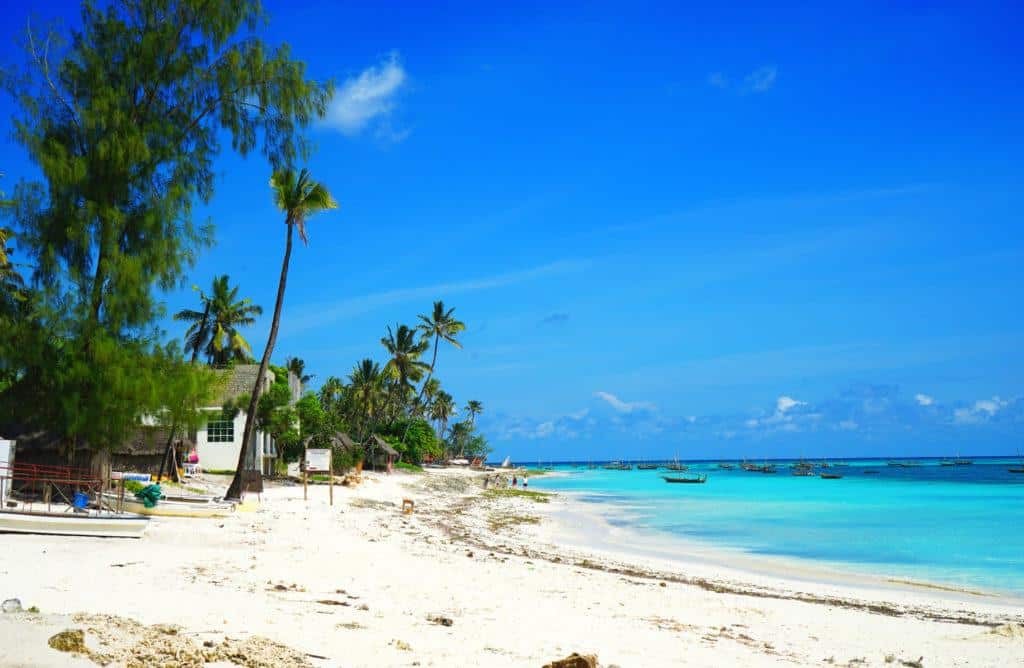
How Much Does It Cost to Travel in Tanzania?
It’s time to tally up all of my expenses to see my total travel costs! For activities and entrance fees, I just included the bare minimum for an average day, as this price will vary greatly depending on the activities you choose to do.
- Accommodation: $51 per day
- Transportation: $10 per day
- Food: $6 per day
- Activities/Entrance Fees: $45 per day
Average amount spent in Tanzania: $112 a day!
Related Articles on Tanzania
🇹🇿 How to Visit Zanzibar on a Budget
🏝 22 Incredible Things to Do in Zanzibar, Tanzania
🌶 Why You Must Take a Spice Tour in Zanzibar
✈️ A Ridiculous Introduction to Travel in Tanzania
Author bio: Born and raised in Toronto, Lydia has found “home” throughout her travels around the world. She’s a passionate storyteller and writer and you can usually find her dreaming about new adventures or having a deep conversation with a friend.

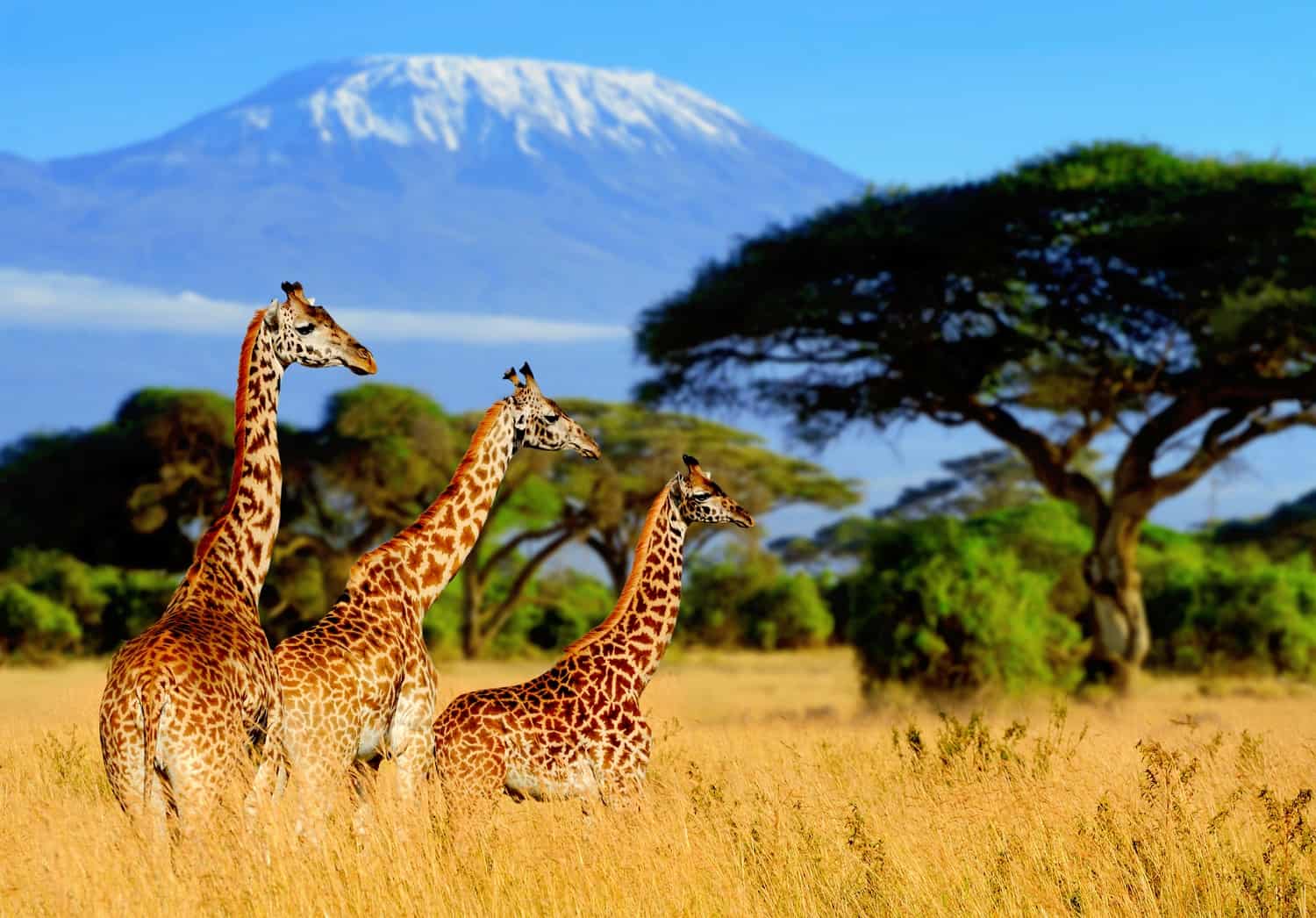


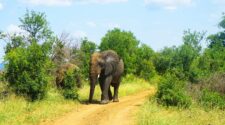


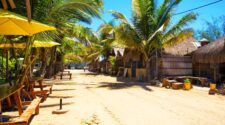
I love Tanzania! I spent a month there just before the pandemic and loved it so much that I planned to keep returning every year. You can guess how well that has worked out so far! Hopefully I’ll be able to get back there soon. This was a great guide and I love your accommodation recommendations. So helpful!
A great guide for Tanzania! Thanks so much for all of the details you included here – I really appreciated having a local’s insight into the costs I can expect to encounter. Now it’s time to start saving up so I can make it there within the next year!
Hi Lauren,
My Travel agent quoted us about $7000 per person for a 10 days trip to Tanzania in august, is not luxuries . I find very expensive but I don’t know if I can plan this trip on my own. Any ideas would be appreciate. Thanks for your post!
Oh yes, that is very expensive! It shouldn’t be tooooo difficult to book on your own — where were you planning to go over your 10 days? I’m happy to take a look at your route and included activities to see how much it’d cost to book on your own. In general, you can easily find accommodation on Booking.com and flights on Skyscanner, so that covers the basics. And then you’ve got the safaris and tours, which can be trickier, but are still easy to book on your own. But it’s hard for me to say definitively without knowing the details of your trip :-)
What a wonderful, enthusiastic and informative post! I like to travel slowly so I can experience people and culture as much as nature, and you got me re-excited about my upcoming visit just at the point I was beginning to feel overwhelmed.
My friend is probably backing out of the five week adventure we planned for this summer, and suddenly I’m having to scramble to re-do everything on my own with a tighter budget, because traveling solo costs more. (The good news? I get to do it all my way, and I’ll probably have a more interesting time).
I’m really grateful for your thorough, informative, and evocative sharing. I have a much better sense of the experience and I feel more confident in how to organize my time there – which is coming up pretty soon. (I’m going in 2 months!). As you wrote this originally in 2018, I’m wondering whether the price guidelines have been updated for 2023.
And now I’m off to read more of your Tanzania/Zanzibar posts :D Thanks again.